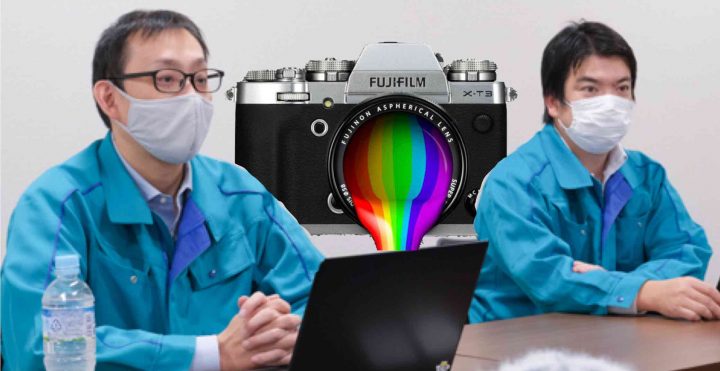Fujifilm Colors Science: GFX vs X Series, From Superia to Classic Negative, More Film Simulations – (Part 2)

Just recently we published the first part of the of a long interview with Fujifilm managers about Fujfiilm color science and film simulations. You can find it here.
Now the second part has been published in Japanese by the website dc.watch.
Down below a summary in English (taken from google translate).
GFX vs X
- classic negative is designed based on Japanese ideas, and the classic chrome is designed from a worldwide perspective.
- When evaluating than at the time of design, the ideas and perspectives inevitably end up in Japan, where we live, so every time we talk to each other, “Imagine the sky in Hawaii.” ..
- GFX and X series have the same data when it comes to elaborate their colors
- GFX has more dynamic range on the highlight side. Overexposure is harder to occu
- We have developed both the GFX series and the X series based on a common design concept, so the dynamic range on the highlight side is designed to be exactly the same for the GFX and X series.
- the GFX series has a particularly excellent lens performance with high MTF, with no need to apply much sharpening during image processing.
- That the difference in lens performance is the base for the difference you see in X and GFX images. Also the modest adjustment in image processing for GFX has some influence.
- about image processing: emphasizing sharpness also emphasizes noise
Provia – Velvia – Astia – Monochrome – Color Tuning
- People coming from film say that Provia is “hard”, but those coming from digital say it is “just right”
- Velvia was initially too saturated [we compared original velvia vs new velvia here]. Velvia was improved with Fujifilm X-Pro2.
- if you set color chrome effect to weak, the depth of color will increase dramatically and you can enjoy deeper velvia.
- by applying the color chrome effect you can get closer to original Velvia film stock
- Velvia’s green shadow has a cyan taste [which the interviewers says is very pleasing and beautiful]
- you can’t recreate film simulation just by chaning saturation. For example, you can’t take Provia, raise saturation, and get Velvia, because the balance of each color is adjusted for each film simulation. Even if one color can be reproduced in the same way, other colors will be expressed differently.
- each film simulation has a different look
- All film simulations have different color tilts for each lightness.
- ASTIA is designed to improve the saturation balance between people and landscapes so I think it’s best not to change the image quality settings too much
[Admin note: which is why I told you back in 2019 that I use Astia often when I have landscape and people in the same shot. Best balance for me] - The film simulation “Monochrome” is grayscaled based on PROVIA, but in “ACROS”, special tuning is performed with reference to the spectral sensitivity curve of the film to reproduce the gray tone with respect to the color. The expression is different from the monochrome mode of a general digital camera
Profiles Unveiled
- A manager said he mainly uses PROVIA, with highlights and shadows set to -1 respectively, color and sharpness set to -1 and color chrome effects set to weak
- If you feel that this is a little flashy, use PRO Neg.Std to add 2 colors. It’s balance between impressive at first glance and feel comfortable looking at it all the time
- If you want something like “bleach bypass as a photographic work”, you can reproduce it by setting the tone control shadow to plus 3, the highlight to plus 1, and the color to minus 4. The idea is to make the tone harder and the color lighter
Picking the names of film simulations
- Classic negative was initially called “Superia.” However, the name has changed due to various reasons.
- ACROS was ACROS from the beginning to the end.
And more
- “color depth” is “tonality.” Brightness tonality, hue tonality, saturation tonality.
- For example, “deep red” cannot be simply expressed as “dark red”
- color chrome effect expresses the “depth” of a color by contrasting the brightness and saturation of dark colors
You can read it all in original Japanese at dc.watch.
Join Our Owners Groups
- Fujifilm GFX User Group
- Fujifilm X-T User Group
- Fujifilm X-S User Group
- Fujifilm X-H User Group
- Fujifilm X-E User Group
- Fujifilm X-Pro User Group
- Fujifilm X100 line Group
Join Our Facebook Pages

